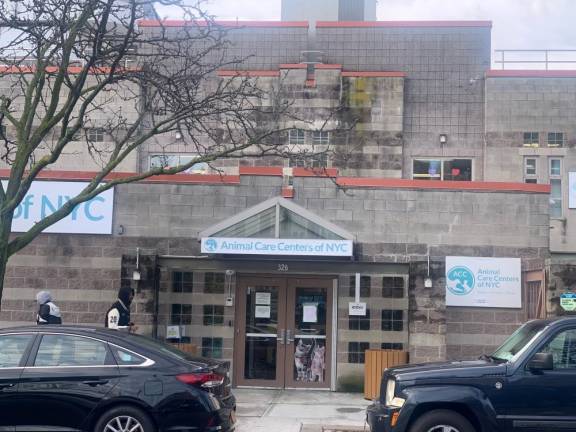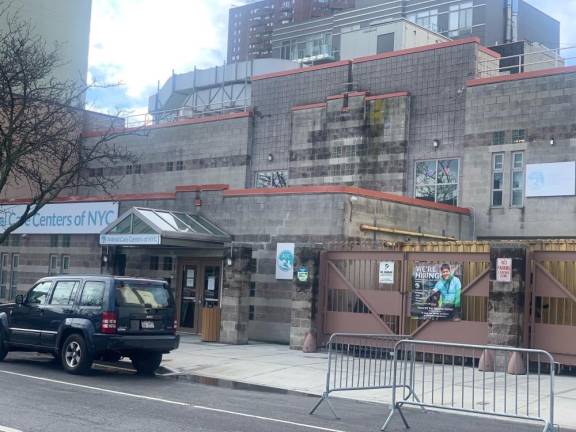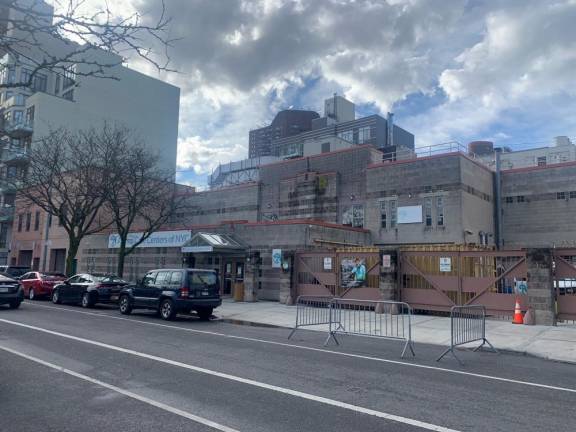Problems at ACC Magnified During Pandemic
Animal rights activists criticize conditions at the already struggling city-contracted animal shelters



New York’s animal rights activists have long criticized the Animal Care Centers of NY for poor conditions and the high numbers of dogs and cats on their “kill list,” often put down before potential adopters have had much chance to view them. Pandemic-related staff shortages at the ACC since 2020 have only compounded these issues.
In the past year, the ACC has been blighted by a lack of staff and a decrease in available veterinary services, aggravating the preexisting problems. Conditions in the shelters may also affect more total animals today than in the past: As reported by the NY Post, the month of July 2021 saw 1,393 animals dropped off at ACC shelters, more than double the number from the previous February.
The ACC’s high kill rate has made it the target of criticism by animal rights activists in the past, and the rate in 2021 remained as high as ever. According to data from the first eleven months of 2021 (their December data is not yet available), the city-contracted shelters euthanized 1,072 dogs and 1,223 cats between January and November.
The reasons behind the shelters’ use of euthanasia are sometimes unclear. ACC spokespeople have repeatedly said that the shelters never kill for space. However, a 2013 YouTube video shows CEO Risa Weinstock stating at a public press conference that euthanasia, when it occurs, is done for space reasons — directly contradicting their claims.
“There’s a certain number of animals that our shelters can hold. We have a capacity issue,” said Weinstock in the video. “We do not have the resources or the space to keep animals forever. That’s a sad reality of the shelter world.”
ACC spokesperson Katy Hansen told Straus News that Weinstock’s statement in the video is outdated, reflecting a time when their intake was higher. Hansen states that currently “[the ACC] do not euthanize for space but only in cases where behavior or medical conditions preclude an animal getting placed,” and that they now have “over a 90% placement rate” for their animals.
Controversial Cases
Several controversial cases of euthanasia at the ACC have been widely publicized, sparking fury among New York’s animal rights activists. A widely circulated video from 2019 shows a sedated dog named Maverick being dragged to its death inside the Manhattan ACC, stumbling as it enters the “kill room.” Enraged activists shared the video on social media, hoping to spur the passage of new legislation protecting the city’s dogs and cats, but as of the time of writing nothing has been done.
Spokesperson Hansen says that the euthanasia of Maverick was necessary because “both ACC and DOH determined the dog was a serious risk to the public and there would be no way to anticipate the next target of this type of aggression.”
Another heartbreaking case at the ACC in 2020, reported by News 12 Westchester, involved a shih tzu named “Mr. Magoo” (also known as “Gaston”), found abandoned in Queens. The man who found him specifically stated when dropping the dog off at the Brooklyn ACC that he wanted to adopt him if the original owners were not found, and asked that they call him before doing anything. The next morning, the original owners did arrive at the shelter, only to find that Mr. Magoo had already been put down.
“[Mr. Magoo] was perfectly clean upon intake, and filthy dirty ... in less than one day,” says Manhattan-based animal advocate Judy Lustgarten-Goldstein. “They killed this poor little pup the same day that he was brought into ACC.”
Hansen says Mr. Magoo’s microchip was unregistered and could not be traced to the original owners when he was brought in, and says he had to be euthanized before his owners came forward because of health concerns, citing a “poor prognosis and quality of life.”
The NJ Animal Observer, which looks at standards of care in the New York and New Jersey area, published a 2018 article noting the large number of animals that are put down in ACC shelters, and the lackluster efforts to find them homes before resorting to euthanasia. They found that almost all instances of euthanasia occurred within 30 days or less of the dogs’ arrival at the shelter, slamming the ACC for “[giving] the dogs it killed virtually no chance to become adoptable.”
“New York ACC killed 62% of the dogs it killed on the very day they arrived at the shelter,” the NJ Animal Observer notes, drawing from the ACC’s 2018 data.
The ACC claims that they keep alive about 90% of total intake animals and euthanize only 10% or less, but this number is misleading for two reasons. First, the ACC has an unusually high percentage of “owner-requested euthanasia” compared to other shelters, due to the way they record their data. They subtract these deaths from their total number of euthanasia cases, thus counting only the remaining deaths. If “owner-requested euthanasia” is included, the number of animals euthanized jumps — in 2019, for instance, it was over 14%.
“Given [that] New York ACC uses the Asilomar Accords, which require shelters to exclude owner requested euthanasia from their live release rates, New York ACC has a strong incentive to count killed animals as ‘owner requested euthanasia,’” notes the Observer report.
Further, the 90% vs. 10% statistic is bolstered by a large number of guinea pigs and other small animals, which by and large are kept alive. The numbers for dogs are much higher: in 2019 nearly 21% of dogs in the ACC shelters were euthanized.
Former City Comptroller Scott Stringer audited the ACC in 2020, publishing his findings, which described “unacceptable humidity levels, instances of dirty kennels, expired medication, and food past its ‘best by’ date.”
“The recurring [issue] is always a lack of caring for the animals. No water in bowls. Excrement not removed,” says William Sacrey, a director at the Shelter Reform Action Committee (SRAC), a coalition of animal advocates committed to improving the life and treatment of homeless animals in New York City.
Pandemic-Related Issues
The ACC is currently suffering from several major pandemic-related issues which limit its ability to care for animals. First, the “great resignation” has not spared the ACC, and its leaders describe frustration at seeing their employees leave for outside positions with salaries with which they cannot hope to compete.
“We are definitely short-staffed. Our ideal number is 285, it’s always been 285, and we’re at 246,” said Weinstock at the ACC’s board meeting on January 28, 2022. “The quarantine really takes a toll on us. There was such a dip in services, we had to close in February for certain services because we had no staff.”
Spokespeople for the ACC also cited the crippling nationwide veterinary shortage as a hardship for their organization. “The crisis in veterinary services is so dramatic,” stated Weinstock. Dr. Robin Brennan, senior director of Veterinary Medicine at the ACC, described an “impending crisis” in the veterinary industry, which has greatly damaged the ACC’s ability to get health care for its sick animals.
Some of those concerned with animal rights in NYC defend the ACC, arguing that it is doing its best with limited assets and staff during the pandemic. Valerie McCarthy, an NYU masters’ student in the Animal Studies program, states, “From what I saw, [the Manhattan] ACC does really good work given what little resources and dilapidated facilities they have.”
There is reason to be hopeful that conditions at the ACC will improve. Construction on a new ACC shelter in Queens is progressing on schedule to get a certificate of occupancy by summer 2022.
In addition, the SRAC reports that “ACC has added over 1,100 more fosters, and is focusing on training more people who will foster large dogs.” This is important news because fosters help get animals out of the shelters before they can get sick, and allow the animals’ behavior to be observed in a home setting rather than in an institution.
Lack of Incentives
Why is the city shelter system so plagued by these issues? It is unlikely that the ACC’s high kill rate and poor conditions result from a lack of funding. Indeed, the ACC’s financial statements from 2019 (the most recent year for which data is available) show that the organization’s total revenue exceeded $21,900,000. Using the ACC’s own estimate on their website that they intake approximately 25,000 animals per year, this provides for over $876 in funding per animal.
In early 2019, the ACC entered into a 34-year contract with the city, despite animal rights advocates’ concerns that such a long-term contract could reduce the organization’s accountability and prevent competition and/or innovation from other animal shelters. The city’s Department of Health renewed its contract until 2052 in a $1.4 billion agreement.
“[City Comptroller] Scott Stringer always feigned outrage at ACC conditions,” says Sacrey, citing the aforementioned audit that noted dirty kennels, but notes Stringer nevertheless approved the ACC’s 34-year contract during his term. “Why did he approve after always saying ACC needs to do better? What other city contracts run for thirty years? What is the incentive to perform?”
One lack of incentive for improvement may lie in the source of funding: “The people at the ACC, their salary depends on the Department of Health, and the Department of Health has a huge conflict of interest when it comes to animals,” says advocate Esther Koslow, who was previously an ACC volunteer but left in 2009 to work with the Shelter Reform Action Committee. “Their incentive is to protect people from animals, not the animals [themselves].”
Concerned readers may reach out to the Shelter Reform Action Committee at https://www.shelterreform.org/.
Those interested in fostering or adopting an animal from the Manhattan ACC shelter may visit at 326 East 110th St. from 10 a.m. to 6 p.m. daily, by appointment only.